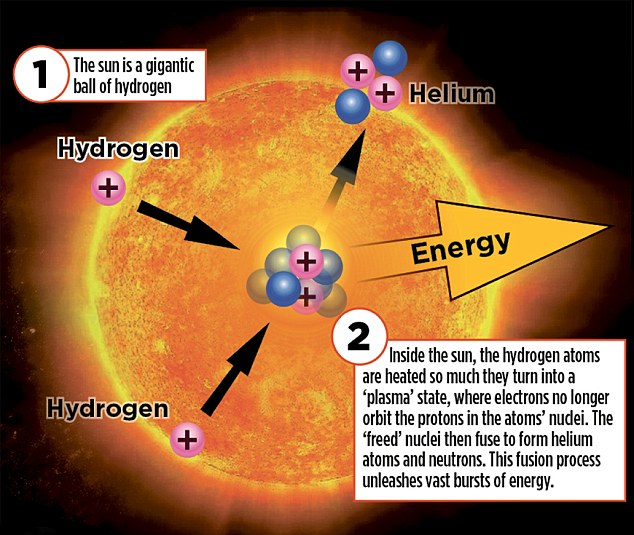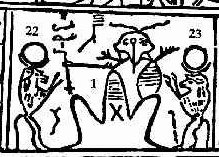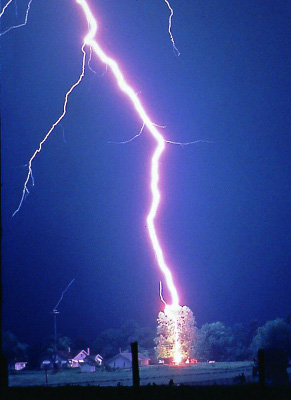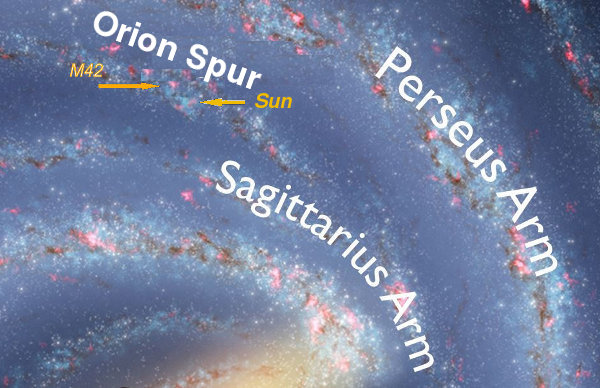
by John P. Pratt
14 Feb 2018, 1 Birth (V), 1 Wind (SR)
©2018 by John P. Pratt. All rights Reserved.
| 1. Nuclear Sun |
| 2. Abraham's Sun |
| 2.1 Kae-e-vanrash: Sirius? |
| 2.2 Power Boosters: Orion's Belt? |
| 3. Electric Sun |
| 4. Conclusion |
| Notes |
 |
In 1908 there was an excellent summary article in Scientific American of theories of the age of the sun and the earth as derived from physics known at that time.[1] The source of energy for the sun was thought to be from its slow gravitational contraction. As the sun very slowly contracts half of the energy would go into light and half into heating up the sun. As for the earth, digging deep holes showed that the interior of the earth gets hotter. Putting numbers into how long gravitational processes could last put the estimates of the ages of both sun and earth to be from 10-30 million years old.
 |
Conflict between the two sciences of physics and geology mounted until the theory that the earth is billions of years old became accepted by the general public and those funding scientific research. Then astrophysicists became pressured into thinking of some alternate theory of what could keep our sun shining for billions of years, which supposedly would give life enough time to create itself into what is seen today. What could possibly do that? Understanding creation and life is much harder, if not impossible, when God is not allowed to participate!
Finally, when the nuclear age dawned in the 1930s, it was proposed that nuclear reactions at the center of the sun could give it an age of constant shining for billions of years. Keep in mind that this theory was created solely to please the geologists (and those who fund scientific research). Now the question was whether any evidence whatsoever could be found to support this speculative conjecture. After all, who could know what is going on in the center of the sun?
When I was working on my PhD in astronomy in the 1970s at the University of Arizona, this was a hot topic. The only predicted physical evidence for nuclear reactions at the sun's core was that there should be a certain amount of neutrinos detected. Neutrinos are massless particles which would result from nuclear reactions which could penetrate the entire mass of the sun to come to earth to be detected. The problem was that none could be detected at that time. Then the experimenters kept improving their detection equipment so they could say that the level of emission was lower than expected by the computer models of the sun. Then the theoreticians would adjust the parameters in their models and announce that in the latest models they expected fewer neutrinos, which number was just below the detection level of the equipment. These adjustments went through several iterations until finally some neutrinos were believed to have been detected and the issue was felt by many to have been resolved.
Now it turns out that the latest refinements are showing that the neutrinos from the sun being detected are actually more likely to originate from the sun's surface and/or corona (high, bright solar atmosphere or halo) rather than from the interior. So again the problem arises that there is no compelling evidence that nuclear reactions are powering the sun.
Where does the power come from to make your light bulbs glow? Suppose it comes from the generator at the dam, which provides electric power to the entire state. In answering the question of the power source, we might not mention all of the electric wires carrying the electric current. We probably would not answer that it comes from wires attached to the light fixture because that would not really answer the question. The true source of the power is the generator.
 |
We can ask about the stars in our solar neighborhood. Might it be possible to identify this Kae-e-vanrash star which governs and powers the sun? It turns our that there is one star of those nearest the sun which is a clear candidate to be Kae-e-vanrash. It is much brighter than the sun and is indeed the brightest star in the sky! Sirius is the fifth nearest star to the sun, being only eight light years away, whereas the nearest star is some four light years away. A light year is the distance that light can travel in a year, which is some six trillion miles! Sirius is the brightest star in the constellation Canis Major, the Big Dog. If we were to pick one star that would be the governing star of a local group of fifteen stars, Sirius would be the logical choice.
It turns out that the star Sirius was incredibly important to the ancient Egyptians, which suggests that Abraham might have taught them about it. After all, he had been commanded to go teach the Egyptians about the astronomy the Lord had revealed to him (Abr 3:15). Their calendar was based on the annual heliacal (with the sun) rising of Sirius (Sothis) in the summer that heralded the beginning of the all-important flooding of the Nile plain. It was by far their most important and worshipped star.
 |
The native Dogon tribe in Mali, Africa, has worshipped that little star for centuries, saying it is really the more important star of the pair. They call it the heaviest star and know that it takes fifty years to orbit Sirius. All of their information appears to be correct, right down to the shape of the orbit (See Figure 3). It has been a real mystery where they got such detailed information about a star not visible to the unaided eye. In fact, they themselves may be unaware of the source of that information which they have carefully preserved.[2]
Thus, it sure looks as if Sirius could be identified with Kae-e-vanrash and hence be called the sun's governing star. But the governing is not gravitational as it would be if Sirius were at the center of a local star cluster to which the sun were gravitationally bound. The governing would have to be a different sort. And indeed the Book of Abraham points out that the type of governing is that Sirius provides light to the sun on the light's journey from Kolob.
In passing, we know that there is another bright star near to Sirius which also could be a second-in-command governing star of the sun. It is roughly in the same direction from the earth as is Sirius and only eleven light years from us. It is Procyon, another bright star which is the main star in Canis Minor, the Little Dog. Moreover, Procyon is also a double star with a white dwarf companion. Sirius and Procyon are not only near each other, they are connected in the mythology about the stars, both being the hunting dogs of Orion, the Great Hunter.
 |
If the fifteen stars governed by Kae-e-vanrash are stars with planets with people on them (D&C 76:24), then there are only a few nearby stars which would qualify. One of them is the very nearest star, alpha Centauri (α Cen), the brightest star in the Centaur. Another likely candidate is τ Ceti which has a habitable planet. Of the nearby stars, many have now been discovered to have planets that could be habitable with life as we know it. Click here for an illustration of several nearby stars with habitable planets.
Thus, looking at nearby stars with habitable planets along with the nearby stars listed in Figure 4, there may indeed be about fifteen that could be governed by the bright star Sirius and/or its white dwarf companion, even as taught in the Book of Abraham about Kae-e-vanrash. It is interesting that the number fifteen is explicitly mentioned for the group to which the sun belongs. Fifteen is reminiscent of a First Presidency of three and a Quorum of Twelve. As we've just looked at our local area, there are two bright stars, Sirius and Procyon and a white dwarf companion to Sirius which could constitute a local presidency, and then there are about twelve stars either similar to the sun in size and color or known to have planets. Thus, they could be like the Quorum of Twelve (D&C 88:61)
Other links mentioned in the Book of Abraham Facsimile 2 in the chain going back to Kolob apparently include the two stars on either side of Kolob: Kli-flo-ises and Hah-ko-kau-beam, which are shown as numbers 22 and 23 on either side of Kolob (See Figure 2).
 |
In summary, Abraham was shown a series of important stars for our sun. Then he was commanded to go teach the Egyptians about it, and then the Egyptians began to single out the star Sirius and those in the belt of Orion as not only important but perhaps even making shafts in pyramids to point to and selecting pyramid locations to represent them. Thus, there is circumstantial evidence that those stars are likely some that Abraham pointed out to them. But what about the idea that those stars actually transmit light to power the sun? How could that be?
 |
Traditional astronomers had reasoned that there could not be electric currents in space or they would all just neutralize themselves. Besides, gravity alone had done an excellent job of describing the motion of the planets in the solar system. If the sun and planets were electrically charged, surely it would have been noticed by now. Electricity is so much stronger than gravity that it is hard to even compare them: electrical force would totally overpower gravity. Thus, most experiments confirming the electrical nature of the sun have been ignored by the traditionally accepted scientific views.
 |
What causes the spiral arms possessed by many galaxies to form? This has been a total mystery to astronomers. The best theory at the time of my schooling was that something caused a shock wave to go through practically empty space to form stars which just happened to be in a spiral. The electric universe theory explains that electrical currents in space naturally form into spiral currents. I bought a toy plasma ball much smaller than that in Figure 6 and when the batteries ran low it only formed two current streams and they immediately formed into a little spinning spiral of two currents opposite of each other just like a little spiral galaxy. Most spiral galaxies have two main arms coming out opposite sides of the center. One of ours in the Milky Way is shown at the bottom of Figure 7. So rather than inventing ad hoc theories to explain the mysterious spiral arms, one can do simple experiments to see the arms form in the laboratory.
 |
 |
The strange claim in the Book of Abraham that the sun receives the power for its light from other stars might well be vindicated by understanding the electrical nature of the sun. The theory of nuclear energy generation at the sun's core was invented solely to satisfy uniformitarian geologists and has not been verified by experimental efforts to detect solar core neutrinos. The stars which supply the sun's light are said by the Book of Abraham to form a chain going to the central creation and governing star named Kolob.
Abraham was commanded to go teach the Egyptians this astronomy and they built a lot of religion and worship both on the star Sirius and on the belt stars in Orion, so those stars are clear candidates to be stars having been pointed out to them by Abraham.
Now the electric universe theory is coming into its own by explaining so many hitherto enigmatic features of the sun and universe. In particular, it explains the spiral arms of galaxies as being formed by electric currents which naturally tend to form spirals. It explains the light of the sun as being supplied by the local spiral arm, which would be the Orion Spur arm of the Milky Way. Thus, indirectly, the electric universe theory and the Book of Abraham both agree that the power for the sun comes from without, and in particular from the spiral arm containing Orion and Sirius as the Egyptians may have believed. There is much yet to be comprehended in studying the creations of God!